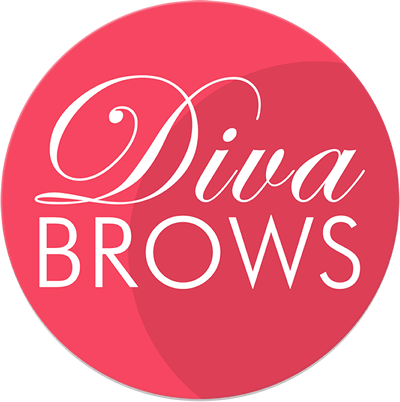How Your Face Ages
Find out what should be expected during each decade in your life; and what you should do for younger looking skin with Fibroblast Treatment.
If you have ever viewed some of those wrinkle time-lapse videos often on TV or online, you no doubt know how frightful it is to watch a face grow old. All the more disturbing is awakening one morning, catching a glimpse in the mirror, to see what looks like “instant aging” — lines that seem to appear overnight.The fact remains, it doesn’t matter how you see it — quick time or live; in the long run, everyone’s face will show wrinkles and age.
“How you cared for your skin from a young age and most importantly, just how much you controlled your exposure to the sun prior to age 20 can certainly create a difference in wrinkle development. But you can find certain expected changes which will happen,” Barbara Couch from Diva Brows in Newport Beach, CA, advises.
As frightening as that may seem, it doesn’t have to be. Barbara explains that by understanding one can anticipate you are able to take the appropriate measures to decrease or delay the consequences of facial aging, such as wrinkles, and manage how the years unfold Your Face in Your 20s
Experts say that as you head out of your teens into young adulthood, your face reflects it, having a more “womanly” appearance.
“In your early 20’s, you’ll start to remove the ‘baby fat.’ And even though the change is slight, overall you begin to look a lot less like a girl and a lot more like a woman,” says Jennifer Desby-Hope, Physician Assistant and Partner at Diva Brows. But as that fresh womanly appeal appears, truth be told, so does the start of facial aging.

Using Home Treatments
While you can do some remedies on your own, even on a limited spending budget, the large majority of wrinkles call for skilled professional care to be completely reduced or eliminated. Once this is the case, bear in mind the sooner you start, the more effective result you’ve got in taking care of your facial wrinkles.
Equally important is not trying to take shortcuts by getting treatments in non-medical businesses. Preferably, always search for the care and recommendations of an approved and registered medical professional prior to booking any specialized fibroblast anti-aging treatment options.
To help you safely begin your journey towards the fountain of youth, many industry professionals have put together a timeline for how the face can age and what you can do, both on your own and with the assistance of your fibroblast professional, every step of the way Your Face in Your 20s
Specialists say that as you move from your teens into young adulthood, your face shows it, having a more “womanly” appearance.
“In your early twenties, you begin to lose the ‘baby fat.’ And even while the change is subtle, by and large you begin to look less like a teen and more like a woman,” says Jennifer Desby-Hope, Physician Assistant and Partner at Diva Brows. Nevertheless as that all new womanly appeal appears, surprisingly, so does the start of facial aging. “This is the decade when the beginning signs of what we call ‘motor wrinkles’ which are lines and creases based on movement — first appear. And the first place they show up is the eyebrow,” Jennifer adds.
On top of that, if you put in a great deal of time in the sun growing up, or long hours squinting in front of a screen, you may even start to see the beginning of “crow’s feet,” those tiny expression lines around the eyes.
This is also the decade when most women start to see undesired facial hair, frequently on the upper lip, across the perimeter of the face, or on the eyebrows.
Barbara says young women also need to be on the lookout for melasma, a brown discoloration that shows up through the cheekbones or your forehead. “This issue is usually a result of a mixture of sun exposure, being pregnant, and hormones [including birth control pills] plus exposure to certain antibiotics which include minocycline or tetracycline.”
Valuable 20’s Self-Care Tips:To sustain your youthful glow, Barbara says steer clear of the sun and be intentional about wearing sunscreen if you are outside. “What you do during your 20s will reflect your appearance in your 40s, 50s, and beyond, and wearing sunscreen lotion is critical,” she says. Sunscreen will also help prevent melasma or assist in keeping it under even better control.
Start using moisturizers regularly with a “light” product, one that’s gel-based and oil free, especially if you continue to be being affected by skin breakouts you encountered as a young adult. She also indicates this is the time period to start using retinol-based skin care products. “You should make use of them twice per week beginning in your 20s,” she tells us. If you feel yourself still having to deal with some acne remaining from your teen years, there are professional treatments that can help skin clear fairly quickly. Your Face in Your 30’s
While you will still retain a lot of your youthful appearance, this is the time in life when you will notice your skin looks ‘tired’ and less brilliant.
Jennifer says you may also start to actually start seeing crow’s feet around your eyes, plus prior sun damage may exacerbate the beginning of small brown spots. You may even start to see dilated blood vessels, commonly around the sides of your nose.
You’ll want to be ready for the start of the “dreaded 11’s”, the set of vertical lines that turn up between your eyebrows, as well as shadows building in the triangular area between nose and the corners of the mouth.
“Both the ’11’ lines as well as the nasolabial lines surrounding the mouth will appear and deepen during this period,” says Barbara.
Useful 30’s Self-Care Tips:Increase the use of retinol products to three to four times a week, Barbara says. If you’re still using oil-free moisturizers and makeup foundations, she says to toss them.
“This is the decade you must get interested in using moisturizers, so find one which is light but has some oil since your skin must have that,” Barbara says. And, she adds, do not forget to carry on using sunscreen lotion. If brown spots are the concern, Barbara says don’t waste your time with bleaching agents. Jennifer says give your facial area an overall boost of youthful appearance with microdermabrasions or a chemical peel, which could also eradicate small spots and also keep that “youthful glow” a few years longer. Your Face in Your Fourties
While you enter your 40s, lines continue to appear near your upper lip, and if you smoke cigarettes, they are going to appear more quickly and go much deeper.
“This is referred to as the ‘purse string’ muscle,” Jennifer says. “And because this area is pronounced, it’s more at risk for environmental sun damage. So if you skipped out on using sun screen in previous years, you’ll see the results here first.”
She says be ready to see a lot more wrinkles on your forehead and crow’s feet near your eyes, along with a deepening of your facial smile lines. “You do need much stronger moisturizers and you most certainly want to use a night cream after 40,” Barbara says.
The main reason, she says, is when you’re sleeping, the body runs through a normal restorative process. You are also not subjected to all the dirt and pollution that attacks skin in the daytime. So, she says, skin products used through the night are more likely to get into the skin a lttle bit better and might supply more effective benefits.
This is also the period when you may benefit most from using an anti-oxidant skin care product. Barbara advises to keep using the retinol-based products, upping the regularity to anywhere between four and five days each week.
Your Face in Your 50s and BeyondFor those who have minimized sun exposure and used sun screen, you will probably proceed into your 50s and 60’s with your skin appearing really beautiful. In any other case, you’ll likely be confronting the collective effects of sun damage and growing older, that include not only a deepening of lines but also an extensive breaking down of elastin and collagen fibers, the support structures that support your skin.
“This frequently leads to a drooping of your face, and skin gets loosened,” Jennifer states.
What’s more, she says, as we get older, we lose some of the fat beneath our skin, which plays a part in a loss of structure in addition to making skin thin and more translucent. This could cause blood vessels just underneath the surface to seem more prominent and your skin looks discolored.
In addition to that, she says brown spots that go untreated in past times can become more dominant now as brand new ones will continue to appear. Moreover, a decrease in estrogen that occurs while in the 50s results in skin to look and feel more dry, helping to make wrinkles and lines appear deeper even more prominent.
“The 50’s and 60’s can be when the impact of gravity really trigger. So in combination with treating lines and wrinkles, you also must give attention to applications that tighten up your skin,” she tells us.
For self-treatment, raise the use of powerful moisturizers, including shea butter, and if you are a soap-and-water girl, she says stop that immediately and begin using a gentle nondrying cleanser on your neck and face. And, she says, continue using retinol products five to six times a week.
It is also the best time to contemplate skin-tightening treatments like Fibroblast, a non-surgical way of lifting the skin. Plasma Fibroblast uses plasma based electricity to promote tightening of the skin.
In fact, some experts say if this sounds like something you’re considering, once you hit 50, sooner is far better than later.
“If you have never done a skin-tightening treatment by the time you are 60, then most of the time it’s too late,” she says. “You won’t get the preferred effect, and the only other option would be a surgical facelift.” But while facelifts are one option, they generally do require major surgery, including the use of anesthesia, and are generally highly-priced procedures that come with weeks of recovery. She also reminds you that you may have only 1-2 lifts in your lifetime. Therefore it is better to postpone as long as you are able to, using other, non-surgical options to buy more time.
“We are all living longer, and so the earlier you start Fibroblast treatment, more youthful you will look as time move forward.”

